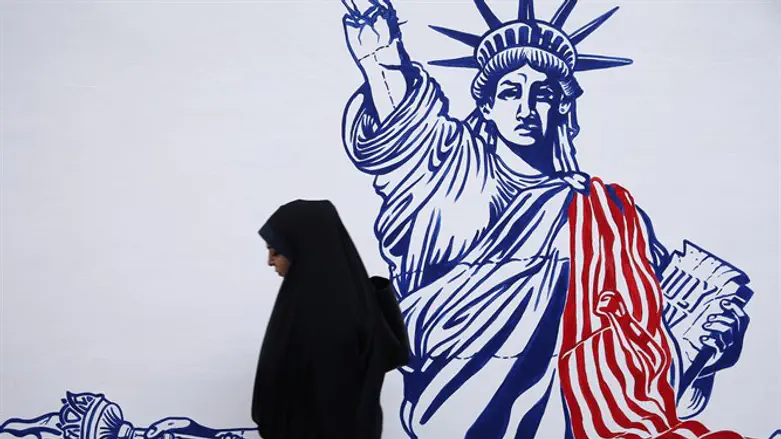
Iran on Saturday unveiled new anti-American murals on the walls of the former US embassy in Tehran, as Iran prepares to celebrate the 40th anniversary of the storming of what it labels the "den of spies", AFP reported.
The new murals -- mainly painted in white, red and blue, the colors of the US flag -- were unveiled by Major General Hossein Salami, the head of Iran's Revolutionary Guards, at the former mission turned museum.
One of them showed a crumbling Statue of Liberty, its right torch-bearing arm having broken off.
Another depicted the triangle of the Eye of Providence, the symbol used on the back of the US dollar bill, in a sea of blood in which skulls are floating, according to AFP.
A third showed the American Global Hawk drone that was shot down by Iran in June over the Strait of Hormuz, with bats flying out of it.
Next to it another work showed an Iran Air plane that was shot down by an American warship over the Gulf on July 3, 1988, with white doves flying out of it.
290 people were killed in the tragedy which Washington has called a "mistake" and for which Iran has for years demanded an apology.
Speaking at the unveiling of the murals, Salami reiterated Iran's grievances against the US.
He accused it of being the only country to have used nuclear weapons, twice in Japan in 1945, and yet of blocking other countries, especially Iran, from benefitting from a civil nuclear program.
He also charged that Washington is lying when it claims to support human rights and democracy, arguing that it backs nearly "all dictators" on Earth.
The tensions between the US and Iran have escalated since US President Donald Trump withdrew from the 2015 Iran nuclear deal last year and reimposed sanctions on the Islamic Republic.
In response to the US withdrawal from the nuclear deal and its imposition of sanctions, Iran has scaled back its compliance with the 2015 deal.
The country's nuclear chief said recently that Iran plans to start using a new array of IR-6 type advanced centrifuges for enriching uranium within weeks. Under the terms of the 2015 deal, the Islamic Republic had committed to not using the array until late 2023.
Salami regularly threatens both the US and Israel but has also declared that his country is not looking for war.
His comments on Saturday come as Tehran is preparing to mark on Monday the 40th anniversary of the hostage crisis.
On November 4, 1979, less than nine months after the toppling of Iran's American-backed shah, students overran the complex to demand the United States hand over the ousted ruler after he was admitted to a US hospital.
It took a full 444 days for the crisis to end with the release of 52 Americans, but the US broke off diplomatic relations with Iran in 1980 and ties have been frozen ever since.